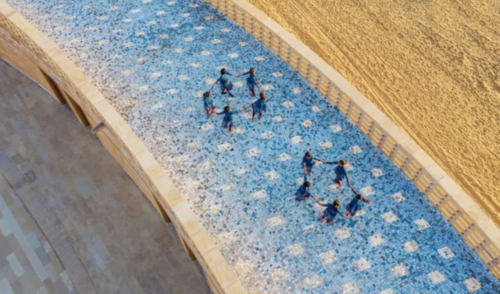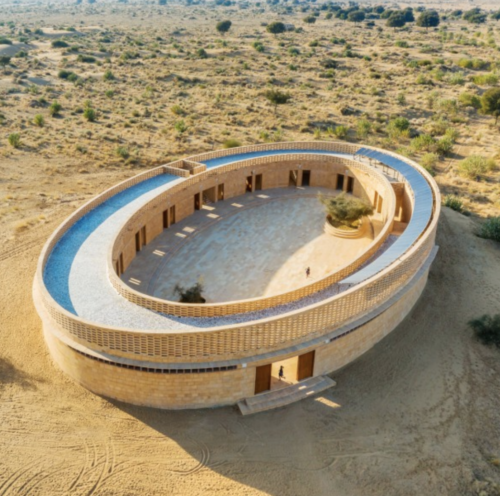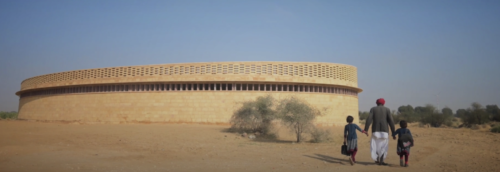
See the beautiful school these dads built for their daughters
By Nate Berg, Fast Company, May 17, 2021
https://www.fastcompany.com/90636863/see-the-beautiful-school-these-dads-built-for-their-daughters
For the construction of the school she designed pro bono in the remote desert of northwestern India, architect Diana Kellogg wanted to make sure local laborers were involved in every aspect of the project.
This was partly for the expected reasons, including tapping into local expertise with the common sandstone building material, and helping out the region’s economy by putting its furniture makers to work. But Kellogg also had an ulterior motive.
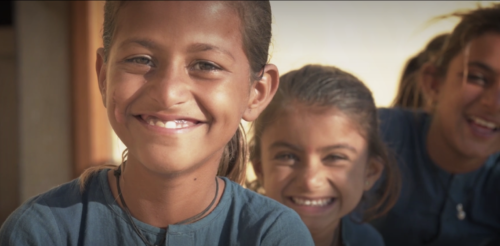
“Part of the reason that I felt it was very important to get the community involved is they’re not big on educating their girls,” Kellogg says. “If I could get the male stoneworkers and furniture makers to have a stake in the school, I felt that I could have more of a chance of having them be receptive to having their girls come to this school.”
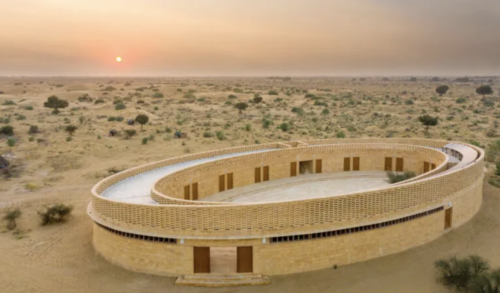
Located in India’s Thar Desert region in the city of Jaisalmer, Rajasthan, the Rajkumari Ratnavati Girl’s School is an attempt to create a space for female education across all age groups.
The school was commissioned by Citta, a non-profit organization that supports development in economically challenged, remote, and marginalized communities.
According to the organization, female literacy in the region is just 36%.

Improving that rate is part of helping women establish economic independence in a place where a caste system still separates society and women are often subservient to men.
Kellogg’s New York-based firm, Diana Kellogg Architects, also designed two other buildings for the project, known as the Gyaan Center.
Construction will begin soon on the second building, a performance and art exhibition space with a library and museum, and then on a women’s cooperative building where local artisans will teach weaving and embroidery techniques from the region.
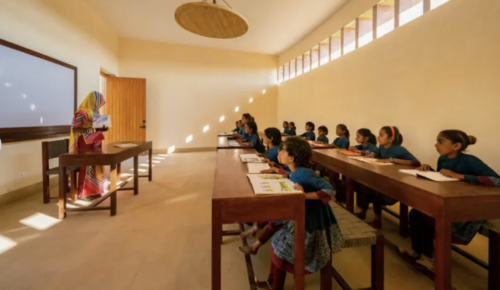
The school was entirely built by local craftspeople, including some who are fathers of the girls who will be attending the school.
The area is known for its sandstone buildings and craftwork, and Kellogg tapped into that local expertise for the design of the school, which was built primarily from hand-carved sandstone.
“I didn’t feel it was appropriate to bring in other kinds of materials, because I wanted the girls to feel comfortable, to feel like it was a familiar,” says Kellogg. “I also very much wanted to work with local craftsmen in a way that was contemporary, so that people there could see that this kind of incredibly fine stone work could be translated into modern forms.”
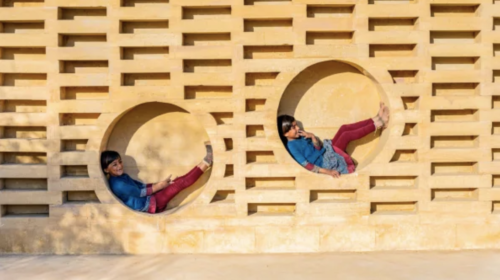
The three buildings are each oval-shaped. “I had been looking at forms across cultures and across history that were feminine forms, and the ellipse, the oval kept coming up,” Kellogg says.
Its circular corridor provides passive cooling, and traditional screen walls have been built in for shade and privacy.
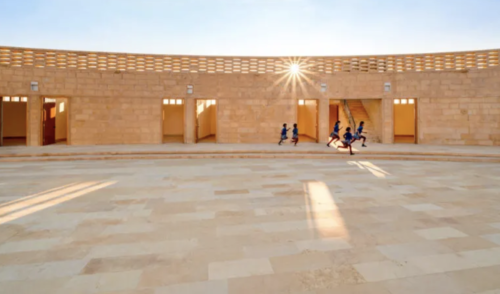
The school is powered by solar panels that are installed as a canopy over the school’s roof, and their metal framework doubles as the structure of a jungle gym.
The center of the school functions as a playground as well as a cistern to collect water and recycle gray water for reuse in the school’s toilets, based on the region’s ancient harvesting techniques.
The courtyard form of the building is common in the region, providing protection from the extreme desert climate.
Huge sandstorms are common there. But, as Kellogg found out when visiting the site during construction, they’re only a minor inconvenience to the local builders.
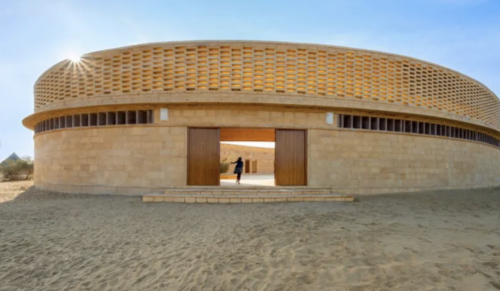
“It’s a 200-foot-tall wall of sand coming toward you, and they showed up for work the next day. I mean, I have contractors in New York City where it snows a little and they don’t show up,” Kellogg says.
The craftspeople in Jaisalmer built the school in just 10 months. “Their resilience is extraordinary.”
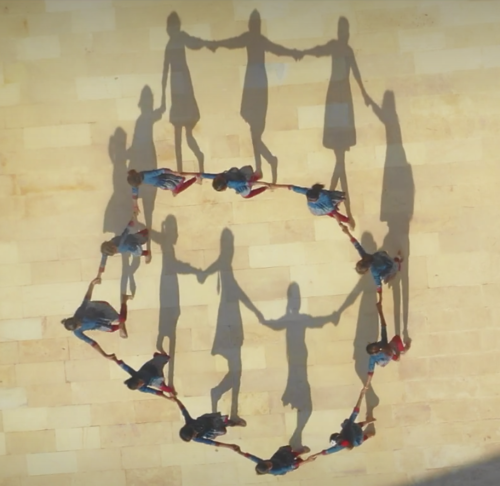
The school was designed to accommodate more than 400 girls, from kindergarten to tenth grade.
It was set to open just before the pandemic struck, so it’s only been used sporadically for events since then.
As the COVID-19 caseload in India skyrockets, it’s uncertain when the school will begin full operations.
Despite this, Kellogg says, about 200 girls have signed up to attend so far, including some of the daughters of the men who helped build the school.
